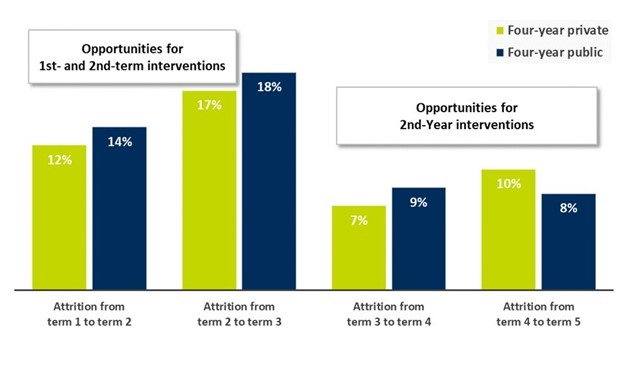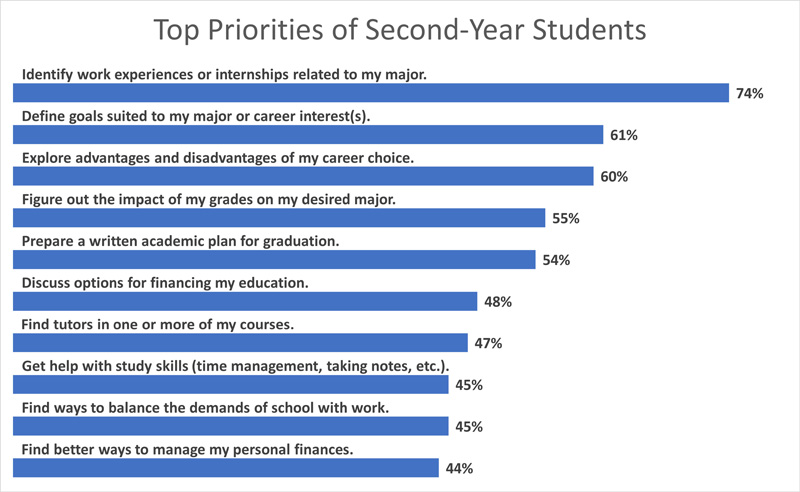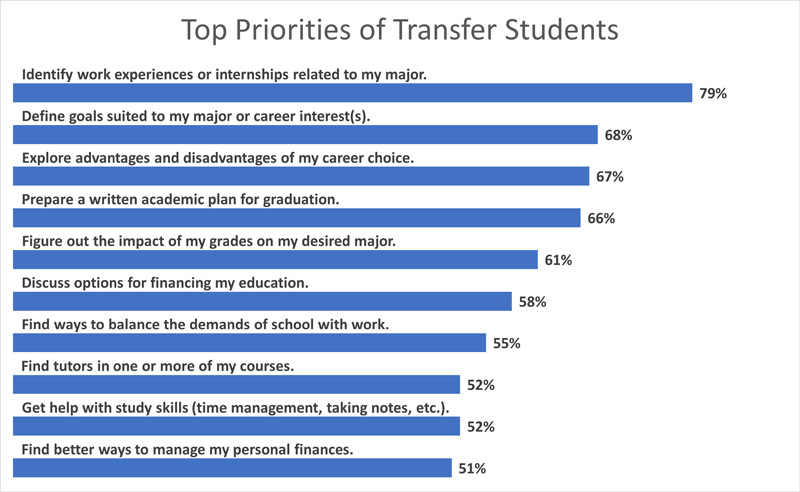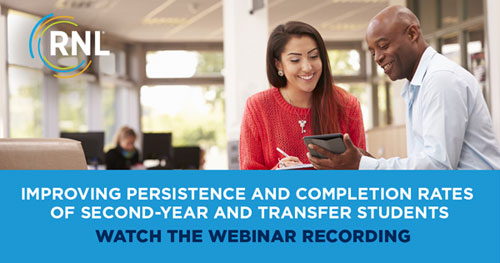student success
How Can You Increase Success With Second-Year and Transfer Students?
The “sophomore slump” has long been a retention challenge for institutions. But with today’s shrinking pool of students, institutions really need to maximize persistence between the first and second years. Likewise, transfer student retention has elevated in importance as colleges and universities also need more of those students to stay and complete their degrees.
What does it take to maximize retention with second-year students and transfer students? We explored the latest strategies in our recent webinar on improving persistence and completion rates of second-year students and transfer students. During that session we examined data on the needs of these populations of students and best practices to meet those needs.
In this post, we’ll take a deeper dive regarding best practices you should consider for your institution. We’ll begin by setting the stage for why assessing the needs of students through the second-year is so important.

From RNL’s 2022 Student Success and Retention Benchmarks Report, we see where interventions are crucial to move the needle on retention, persistence, and ultimately completion. Because a large portion of attrition occurs during the first-year, interventions in the first year are critical, and many institutions have first-year success strategies in place. However, there is still a great opportunity to target a sizeable portion of your student body (between 7-10 percent) and impact persistence in the second year.
You cannot build strategies without first knowing the needs of your students. 2022 data from RNL’s motivational assessments tell us that second-year students have the following needs:

Similarly, transfer students reflect the following needs:

During the webinar, we shared a variety of best practices to meet the needs of these student groups. I encourage you to watch the webinar to see the full exploration, but I will discuss the three categories of best practices we have: Academic, Social Engagement, and Financial. These likely mimic your top reasons for attrition if you do not have appropriate strategies in place to accommodate student needs. Here are strategies we recommend considering to implement, or expand, to impact the success of your second-year and new transfer students.
Academic opportunities
- Early identification of students with academic risks (beyond high school GPA) can lead to early and effective interventions
- Connect students as soon as possible with the assistance they are requesting
- Identify areas in which certain populations of students have unique needs and address these as early as possible
- Capitalize early on and reinforce students’ strong desires to finish college and their strong desire for career/educational planning assistance
Social engagement opportunities
Social engagement opportunities answer the questions, “How can we help all of our students make the connections, develop the relationships, join the communities that will help them thrive?” and, “How can we use data on student’s requests and needs to shape programs, services, resources to help them not just survive but thrive?”
- Although students appear socially comfortable, they are still looking for institutional direction for opportunities to engage socially
- Explore ways to increase students’ tolerance of people who are different from them
- Examine and answer the varying social needs and requests of specific populations
- Provide support for students who need to balance their social interests with academic priorities
Financial opportunities
The pressure about financing their education is very real for many students and has been heightened by the pandemic, inflation, and other implications of world events. Institutions are asking themselves, “What innovative ways can we help students manage the finances they have, gain access to additional financial resources and make the most of their college experiences to ensure the most optimal employment or graduate school placements once they graduate?”
- Allocate financial aid to increase completion rates
- Emphasize pathways to efficient completion as a means to manage finances
- Maximize jobs on campus to minimize time way from studies
- Offer financial counselling, literacy programs, and information to evaluate the use of loans, such as outcomes by major, type of employment, and salary
How can you shape a completion culture?
Finally, the single most important thing we can do to help students is graduate more of them on time. While focusing on first-year students is a start, we have to extend our reach through the second year, and to our incoming transfer population as well.
- Develop a first- through fourth-term plan to support student success and college completion
- Evaluate performance and set realistic goals by comparing your term-to-term persistence (for all students who matriculate) against historic campus trends and current external benchmarks
- Pay attention o your second-year students, where double-digit attrition still occurs
- Examine all policies to assure they are aligned with timely degree completion
To learn more, see our 2022 College Student Motivation Infographic and our 2022 Student Success and Retention Benchmarks Report.
If you would like to talk more with a consultant about how our products can help you identify the needs of your students and drive effective programming for student success initiatives, please feel free to contact us.
Understand the motivations and needs of your students
Assess the motivations of your students to complete college, identify challenges to their persistence, and gauge their receptivity for assistance with the Retention Management System Plus.

